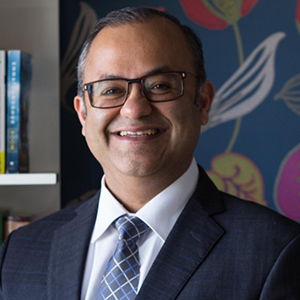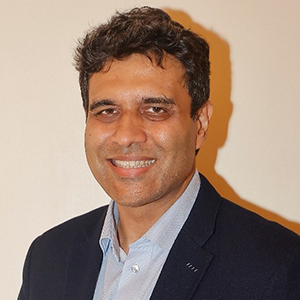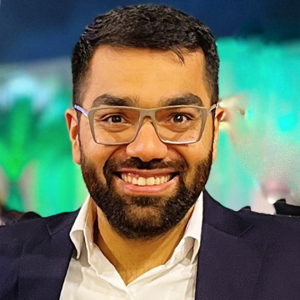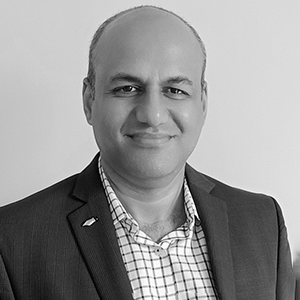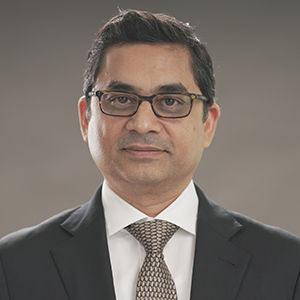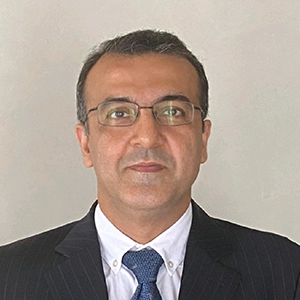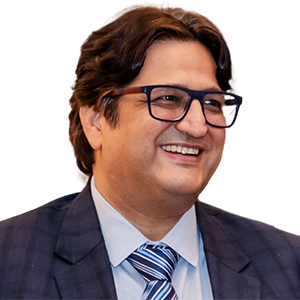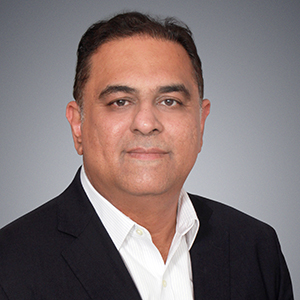About the Event
Agenda '25
-
8:00 AM – Onwards
Registration
-
9:15 AM – 9:20 AM
Opening Address
Anitesh Dharam, Business Head, VCCircle
-
9:20 AM – 9:50 AM
Building blocks of the asset allocation puzzle
Family offices need a well-rounded and robust asset allocation strategy that meets both financial and non-financial objectives, securing wealth for future generations. This involves factoring in investment goals & objectives, risk tolerance, diversification, time horizon & liquidity needs, tax efficiency, estate planning and more.
Speakers:
Amol Sathe, CIO, MEPHEZALEA Asset Services LLP
Jai Rupani, Head, Dinesh Hinduja Family Office
Harsh Dhanuka, CIO, SAR Group Family Office
Gautam Sehgal, CIO, Patni Financial Advisors
Vikas Biyani, Associate Director, Multi-Act IndiaModerator:
Aman Malik, Senior Editor, VCCircle
-
9:50 AM – 10:20 AM
Familiarity bias: boon or baggage
Principals behind all family offices are associated with at least one industry of their own with many having multiple business interests. Some family offices have a clear policy of not investing in sectors where they have their own business to add a sound diversified portfolio creation. How effective is this strategy and are their exceptions that one should exploit? Are there other means to play further in the same sector via a different asset class?
Speakers:
Sharan Asher, Director, Eragon Ventures
Rahul Mehta, Advisor, George Kaiser Family Office
Puneet Jain, VP & Lead - Corporate Treasury, Karan Thapar Family Office
Virendra Acharya, Head - Finance & Investments, VIMSON - Shivanand Salgaocar Group
Subhakar Rao Surapaneni, Chairman, Champion InfratechModerator:
Swet Sarika, Assistant Editor, VCCircle
-
10:20 AM – 10:30 AM
Networking Break
-
10:30 AM – 11:00 AM
Risk management an essential pillar
The first objective of a family office is to preserve the principal sum at play and then look for how to gain in the future. This involves a strong risk management framework that doesn’t shake up with passing investment fads and reins in the proverbial fear-of-missing-out (FOMO). What processes need to be established right at the beginning to ensure this? How can family offices fine-tune their risk management practices over time?
Speakers:
Sidharth Kothari, Chief Investment Strategist, Om Kothari Group
Siddartha Saraf, CIO, Manyawar Family Office
Vivek Tolat, Chief Investment Officer & Head of Family Office Investments, KCT Group Trust
Ramakant Dokania, CIO, Twin and Bull Single Family OfficeModerator:
Aman Malik, Senior Editor, VCCircle
-
11:00 AM – 11:05 AM
Special Address
Khilen Shah, Promoter, Hubtown Ltd.
-
11:05 AM – 11:35 AM
Public vs Private: a juggling act
A well balanced portfolio creation is the basic function for family offices and this includes a good mix of both public and private equity, with their distinct advantages and challenges. What is the best composition of the two and how can family offices align best to sail with the asset price cycle to generate alpha in the short as well as the long run?
Speakers:
Nilang Jain, CIO, Green Gen Family Office
Sunil Dhall, CFA-Investment Management, Al Rajhi Ekhwan Group Co.
Aarti Gupta, Founder, Anikarth Ventures
TC Meenakshisundaram, Founder & Vice Chairman, Chiratae Ventures
Manish Chaturvedi, Founder & MD, Induss Strategy Financial AdvisorsModerator:
Swet Sarika, Assistant Editor, VCCircle
-
11:35 AM – 11:45 AM
Special Address
Speaker:
Sundararaman Ramamurthy, MD & CEO, Bombay Stock Exchange
-
11:45 AM – 12:15 PM
Touch of the new & exotic: Eyes on startups, alternatives & more
Alternative investment either direct into startups or via VC, PE funds and exotic asset classes such as crypto, fine art and more offer family offices another diversification lever that lies outside the conventional investment buckets in the public market. These offer some insulation from global market fluctuations but come with their own loaded risk elements such as illiquidity, valuation challenges, and regulatory uncertainty. What has been the experience with such investments and what are the learnings? When is it prudent to look at such assets more closely?
Speakers:
Devashish Khanna, CIO, Capri Global
Benaifer Malandkar, CIO, RAAY Investments
Mohit Gulati, CIO, Investment trust of India
Imran Jafar, Managing Partner, Gaja Capital
Kunal Varma, Co-founder & CEO, FreoModerator:
Prithvi Durai, Senior Correspondent, VCCircle
-
12:15 PM – 1:30 PM
Networking Lunch
-
1:30 PM – 2:00 PM
Real assets as the evergreen favourite
Real estate has been an all-time favourite of business groups in India as a safe haven as an asset class with the ‘touch and feel’ factor. There have been some temporary setbacks in the past but broadly real estate has been an important asset class for family offices that has resulted in appreciation of wealth. How have real estate investment strategies evolved for family offices and what routes seem more favourable for the future?
Speakers:
Vishesh Narang, Head-Family Office, UKPI
Sachin Jain, Advisor, SPG Family Office
Kartekeya Myadam, Chief Investment Officer, Richmount Ventures Family Office
Rushank Shah, Promoter, Hubtown Ltd.
Kunal Wadhwani, Principal-Invesments, HDFC Capital AdvisorsModerator:
Swet Sarika, Assistant Editor, VCCircle
-
2:00 PM – 2:30 PM
Engagement quotient with next gen
The first generation of family offices started with group finance heads doubling as asset allocators as principals were operational leaders in their domain. But ‘formal’ family offices started with creation of professional structures around two decades ago. Now, we have omni structures as in many cases more financially literate next generation is engaged in decision making along with the professionals. How can family offices balance the roles and responsibilities of different stakeholders so the final outcome is superior?
Speakers:
Anirudh A. Damani, Director, Artha India Ventures
Nitesh Agarwal, CIO, Baldota Family Office
Manish Khurana, Founder, Innovations Ventures Studio
Abhimanyu Sofat, Head Family Office & Chief Investment Officer, Vassudeva Dempo Family Private TrustModerator:
Prithvi Durai, Senior Correspondent, VCCircle
-
2:30 PM – 3:00 PM
Giving back: philanthropy to do good
Philanthropy is an increasingly important aspect of family offices, serving as a way for families to align their wealth with their values and make a lasting social impact. Family offices often establish charitable foundations to facilitate their philanthropic efforts, allowing them to support causes that resonate with the family’s mission. This can include areas like education, healthcare, environmental sustainability, and social justice. What is the right mode to make this happen and yet make it a more tax efficient process? How important is the role of partnerships in philanthropy activities?
Speakers
Leena Dandekar, Founder, Raintree Family Office
Ganesh KC, President, Pratithi InvestmentsModerator
Prithvi Durai, Senior Correspondent, VCCircle
-
3:00 PM – 3:30 PM
Refuelling the engine
Family offices can start with a big bucket corpus triggered by a business sale or via a small sum dedicated from the cash flow arising from dividend earnings of the promoters. Reinvesting the proceeds of the gains is another way to inject more into the system. How often the corpus can and should be refuelled? What is the best practice used by established family offices by routing almost the entire sum to the family office or a fixed proportion every year?
Speakers:
Anoop Tulsyan, Group CFO, Ashok Goel Family Office
Gautam Gupta, VP- Private Equity, Tanas Capital
Pankaj Keswani, Founder & Chairman, Alufit (India) Pvt Ltd & 84 Investments Pvt Ltd.Moderator:
Aman Malik, Senior Editor, VCCircle
-
3:30 PM – 4:00 PM
Networking Break
-
4:00 PM – 4:20 PM
Fireside Chat: The Power of the Pivot - Driving Success Through Strategic Shifts
At the heart of every resilient venture is the ability to pivot—smartly, swiftly, and strategically. Pivoting in terms of product overhauls to business model reinventions has consistently led to outsized growth, stronger market fit, and long-term value creation. The secret sauce is in spotting an opportunity in what others might see as failure.
Speaker:
Rehan Yar Khan, Managing Partner, Orios Ventures PartnersModerator:
Anitesh Dharam, Business Head, VCCircle
-
4:20 PM – 5:00 PM
Confidante and the thread connecting family members
Conflict resolution is crucial in family offices, especially when managing wealth across multiple generations and extended families. Family dynamics can lead to disagreements on investment strategies, governance, or the family’s philanthropic direction. Professional mediators or advisors specializing in family business or wealth management are often brought in to help resolve disputes, promote effective communication, and maintain family harmony. Establishing clear governance structures and facilitating open dialogue can prevent potential conflicts from escalating, ensuring the long-term success of the family office.
Speakers:
Yash Poddar, CIO, Vikas Poddar Family Office
Dhruv Suri,CIO, Asia Titans
Gaurav Agarwal, Head- FO & Corporate Treasury, Oswal Nahar GroupModerator:
Aman Malik, Senior Editor, VCCircle
Speakers '25
Sunil Dhall
CFA-Investment Management, Al Rajhi Ekhwan Group Co.Siddharth Kothari
Chief Investment Strategist, Om Kothari GroupNilang Jain
CIO, GreenGen Family OfficeNitesh Aggarwal
CIO, Baldota Family OfficeDevashish Khanna
CIO- Private Market Investments, Capri Global Family officeSundararaman Ramamurthy
MD & CEO, Bombay Stock ExchangeTC Meenakshisundaram
Founder and Vice Chairman, Chiratae VenturesSiddhartha Saraf
CIO, Manyavar Family OfficeJai Rupani
Head, Dinesh Hinduja Family OfficeRehan Yar Khan
Managing Partner, Orios Venture PartnersVishesh Narang
Co-Founder of VNAM, Head Of Family Office at UKPI(Promoter of Berger Paints India)Vikas Biyani
Associate Director & Portfolio Advisor, Multi-Act Trade and Investments Pvt. Ltd.Vivek Tolat
Chief Investment Officer and Head of Family Office Investments, KCT Group TrustGanesh KC
President, Pratithi Investments (Kris Gopalakrishnan family)Manish Khurana
Founder, Innovations Venture StudioBenaifer Malandkar
CIO, RAAY InvestmentsSachin Jain
Advisor, SPG Family OfficeRushank Shah
Promoter, Hubtown Ltd.Anoop Tulsyan
Group CFO, Ashok Goel Family OfficeImran Jafar
Managing Partner, Gaja CapitalDhruv Suri
Principal & CIO, Asia TitansGautam Gupta
Vice President, Private Equity, Tanas CapitalKhilen Shah
Promoter, Hubtown Ltd.Harsh Kr. Dhanuka
Chief Investment officer, SAR Group Family officeYash Poddar
CIO and COO, Viansh Ventures (Vikas Poddar Family Office)Leena Dandekar
Founder, Raintree Family OfficeSubhakar Rao Surapaneni
Chairman, Champions GroupGautam Sehgal
CIO, Patni Financial AdvisorsManish Chaturvedi
Founder & MD, Induss Strategy Financial AdvisorsDr. Aarti Gupta
Founder, Anikarth Ventures and FoundationRamakant Dokania
CIO, Twin and Bull Single Family OfficeSharan Asher
Director, Eragon VenturesKunal Varma
Co-Founder and CEO, FreoAmol Sathe
CIO, MEPHEZALEA Asset Services LLP (Single Family Office of the Thermax Promoters)Anirudh A. Damani
Director, Artha India VenturesKunal Wadhwani
Principal, HDFC CapitalMohit Gulati
CIO, Investment Trust of India, family office of Sudhir Valia (Sun Pharma)Gaurav Agarwal
Head- FO & Corporate Treasury, Oswal Nahar GroupRahul Mehta
Advisor, George Kaiser Family OfficePankaj Keswani
Founder & Chairman, Alufit (India) Pvt Ltd & 84 Investments Pvt Ltd.Virendra Acharya
Head - Finance & Investments, VIMSON - Shivanand Salgaocar GroupAbhimanyu Sofat
Head Family Office & Chief Investment Officer, Vassudeva Dempo Family Private TrustKartekeya Myadam
Chief Investment Officer, Richmount Ventures Family OfficePuneet Jain
VP & Lead - Corporate Treasury, Karan Thapar Family OfficeOur Sponsors & Partners















Do you have any queries?
Drop us a line and we will call you.










